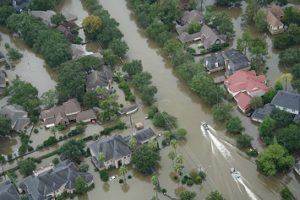Following the disastrous flooding in Texas that resulted from Hurricane Harvey, the U.S. Environmental Protection Agency (EPA) sent 192 people to the state to assist 500 employees of the Texas Commission on Environmental Quality (TCEQ) in assessing environmental impacts. Quips about “I’m from the government, I’m here to help” aside, what are the roles of these agencies following a disaster? Do you know what to expect if your site is impacted?
One of EPA’s vital roles following a flood disaster is to provide manpower and technical assistance needed to get water systems back online.
Coordinating Recovery Efforts
There are a lot of state and federal agencies involved in disaster response and recovery, but even so, it doesn’t make sense for them to duplicate one another’s efforts. Therefore, one of the first things that the EPA did in Texas was to establish a Unified Command to oversee all emergency response efforts—including those conducted by the EPA, the TCEQ, the General Land Office, the U.S. Coast Guard, and other support agencies like the National Guard. These groups make an effort to continuously monitor water and wastewater systems, as well as assess spills or discharges as a result of the storm.
Specific activities include:
Restoring water infrastructure. More than 2,200 drinking water systems and 1,200 wastewater treatment plants were affected by Hurricane Harvey. One of EPA’s first priorities upon arrival in Texas was to make contact with each one to determine its operational status. For drinking water systems under boil-water notices, or that are shut down, the Unified Command dispatches assistance teams to help restore their operational status. Likewise, the agencies provide manpower to wastewater treatment facilities with the goal of restoring them to full operation and offering technical assistance to all affected facilities. In Texas, the EPA is also coordinating efforts with the Federal Emergency Management Agency (FEMA) and the Texas Water Development Board to allocate funding and to address future resiliency.
Assessing floodwater hazards. At flooded industrial facilities and hazardous waste sites, the EPA conducts water quality sampling. The Agency also warns recovery workers about other floodwater hazards, like downed power lines or large objects carried by floodwaters.
Evaluating dam safety. The Oroville Dam in California and the Guajataca Dam in Puerto Rico provide recent examples of how rapidly a small problem with a dam can become a large problem for the people in the flood zone. One of EPA’s jobs in the wake of a flood is to help assess the structural integrity of dams and ensure that any problems are dealt with. In Texas, that meant contacting the owners of all 340 dams in affected areas and meeting with the owners of the 15 dams that reported flood-related damage.
Tomorrow we’ll look at what happens to the debris that is generated by a large-scale natural disaster.

